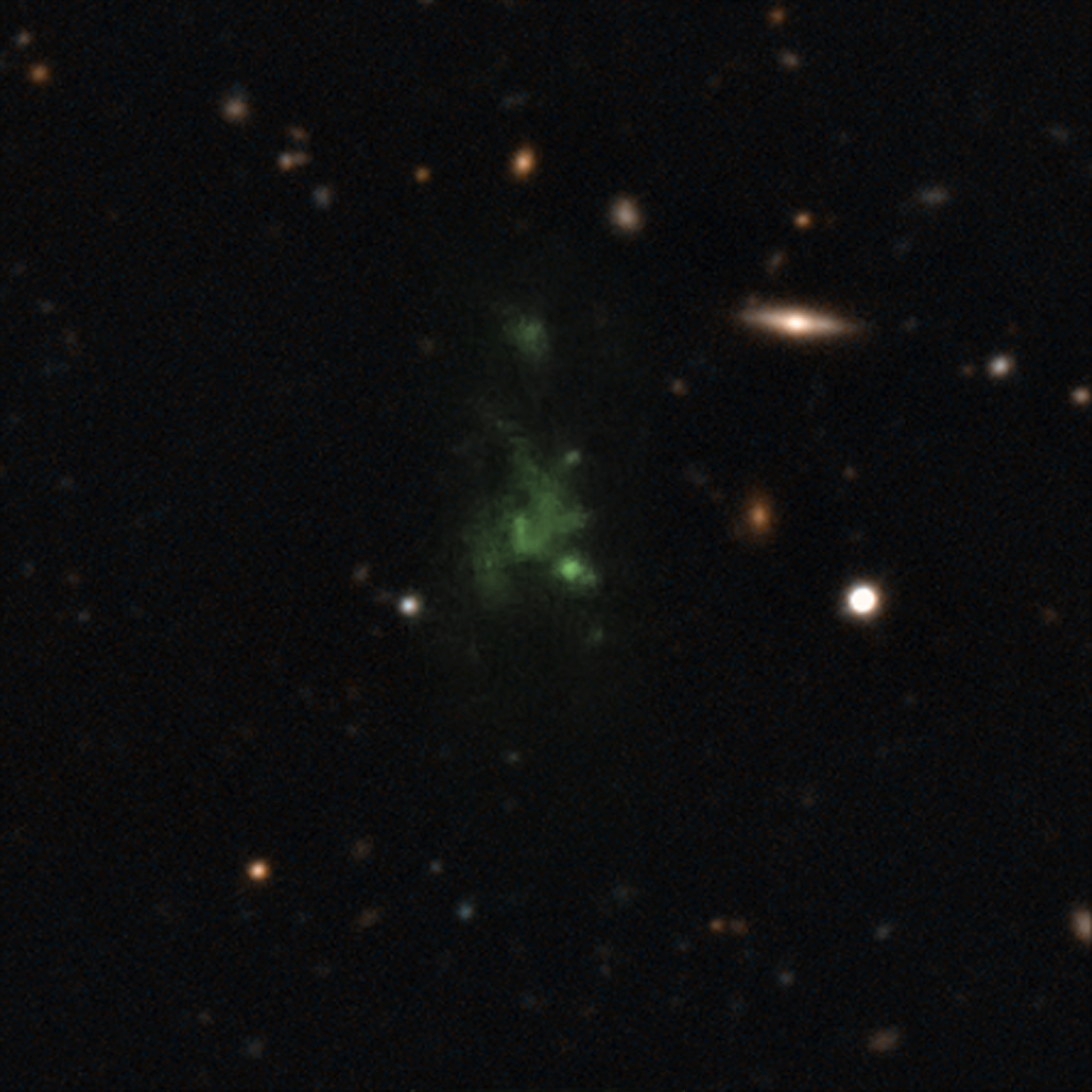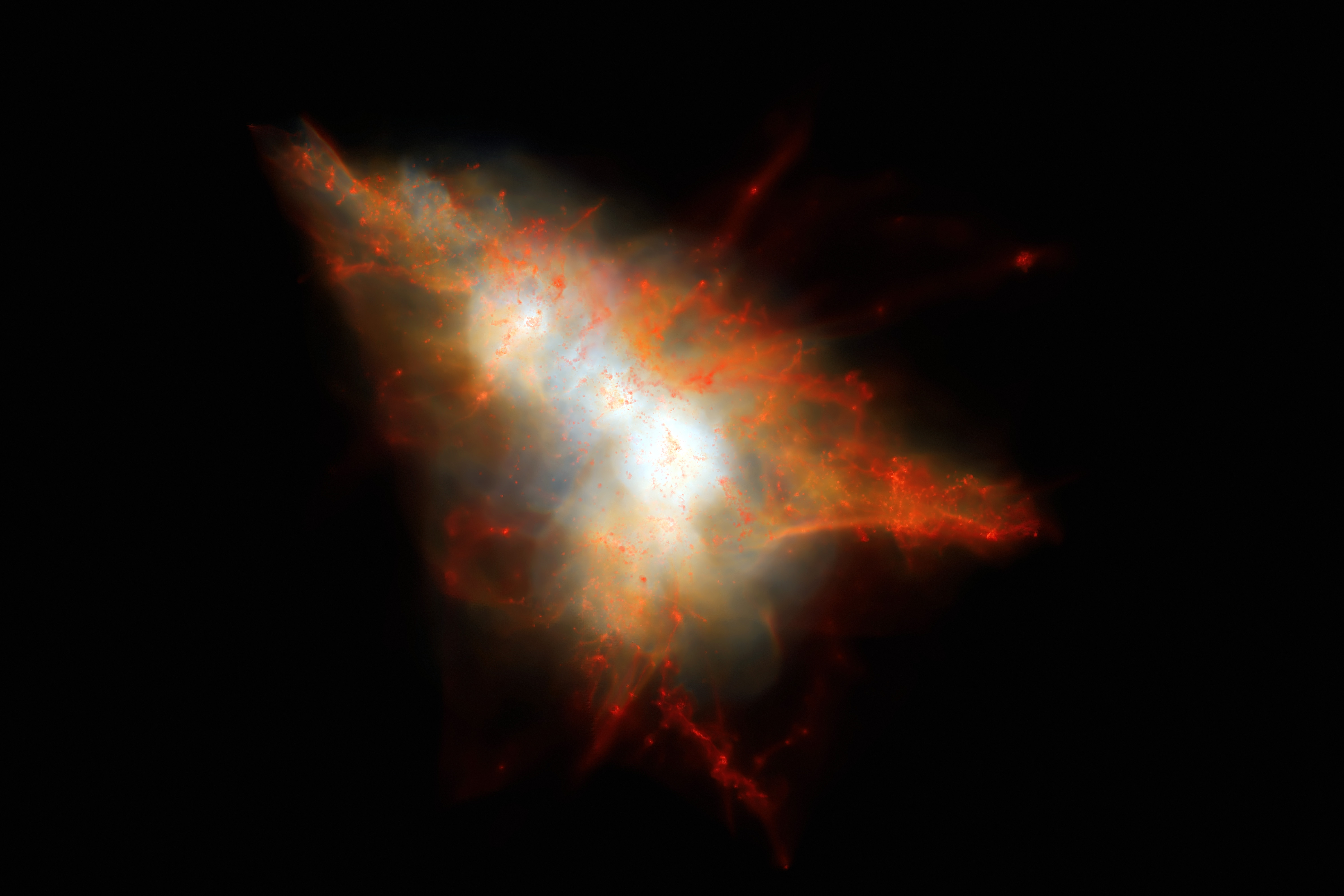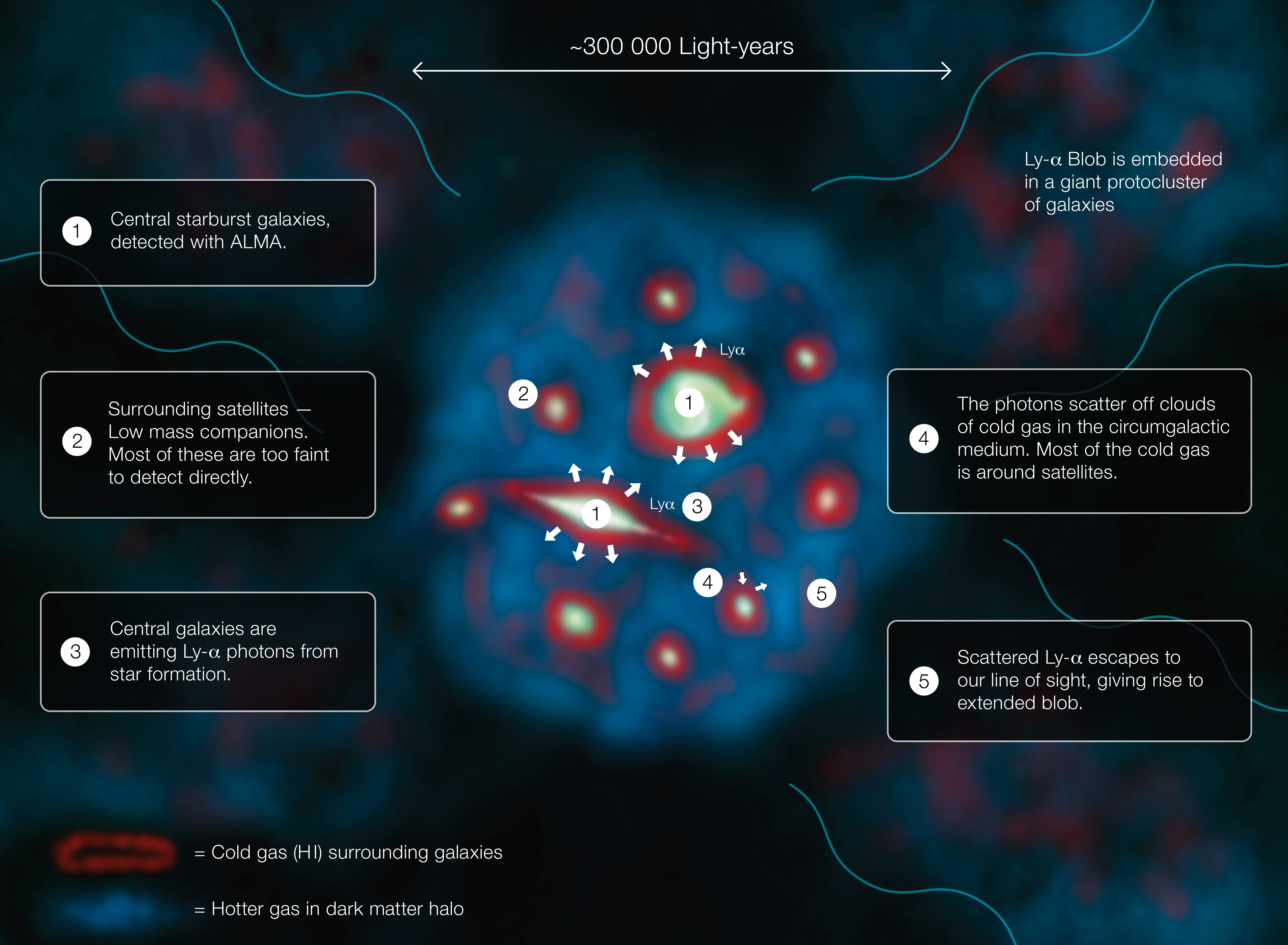Giant Green Space Blob Mystery Solved

A giant blob of gas and dust far off in the universe mysteriously glows bright green, and astronomers have finally figured out why. Two huge galaxies were observed in the blob's core, and they're surrounded by a swarm of smaller galaxies in what appears to be the birth of a massive cluster of galaxies.
Astronomers spotted the blob's central galaxies using the Atacama Large Millimeter/submillimeter Array (ALMA) and the Very Large Telescope at the European Southern Observatory in Chile. The glowing space blob was first discovered in 2000, and the source of its light has been a mystery ever since. Scientists created this video to zoom in on the space blob and reveal its inner galaxies.
One study published in 2011 suggested that polarized light emitted by the blob could have come from hidden galaxies. The new observations with ALMA and VLT allowed researchers to pinpoint two big galaxies as the sources of this light. [See Amazing Photos of the Very Large Telescope]
Further observations by the Hubble Space Telescope and the Keck Observatory in Hawaii revealed the swarm of small, faint galaxies surrounding the bigger two in the heart of the blob. Here, galaxies are forming stars at 100 times the rate of the Milky Way.
"For a long time, the origin of the extended Lyman-alpha light has been controversial," Jim Geach, the study's lead author, said in a statement. "But with the combination of new observations and cutting-edge simulations, we think we have solved a 15-year-old mystery."
Lyman-alpha blobs
So-called "Lyman-alpha blobs" are some of the biggest things in space. This particular space blob, named SSA22-Lyman-alpha Blob 1 (LAB-1), is the largest of its kind. It measures about 300,000 light-years across, or three times the size of the Milky Way galaxy.
LAB-1 is located 11.5 billion light-years from Earth, so the light we observe from it is almost as old as the universe (13.8 billion years). This means that looking at LAB-1 provides a window into the early history of the universe.
Get the Space.com Newsletter
Breaking space news, the latest updates on rocket launches, skywatching events and more!
Lyman-alpha blobs consist mainly of hydrogen gas and emit a particular wavelength of ultraviolet light called Lyman-alpha radiation. The light looks green to viewers on Earth, because its wavelength is stretched by the expanding universe during its long trip here.

Simulating the blob
Once they had observed the sources of light from within the blob, the researchers created simulations of galaxy formation using NASA's Pleiades supercomputer. They wanted to show that ultraviolet light — a byproduct of star formation — scatters off hydrogen gas to create a bright, glowing mega-blob like LAB-1.
"Think of a streetlight on a foggy night — you see the diffuse glow because light is scattering off the tiny water droplets," Geach said in the same statement. "A similar thing is happening here, except the streetlight is an intensely star-forming galaxy and the fog is a huge cloud of intergalactic gas. The galaxies are illuminating their surroundings."

The simulations also track gas and dark matter in the blob as it evolves into a galaxy. "Lyman-alpha Blob-1 is the site of formation of a massive elliptical galaxy that will one day be the heart of a giant cluster," Geach added.
Email Hanneke Weitering at hweitering@space.com or follow her @hannekescience. Follow us @Spacedotcom, Facebook and Google+. Original article on Space.com.
Join our Space Forums to keep talking space on the latest missions, night sky and more! And if you have a news tip, correction or comment, let us know at: community@space.com.

Hanneke Weitering is a multimedia journalist in the Pacific Northwest reporting on the future of aviation at FutureFlight.aero and Aviation International News and was previously the Editor for Spaceflight and Astronomy news here at Space.com. As an editor with over 10 years of experience in science journalism she has previously written for Scholastic Classroom Magazines, MedPage Today and The Joint Institute for Computational Sciences at Oak Ridge National Laboratory. After studying physics at the University of Tennessee in her hometown of Knoxville, she earned her graduate degree in Science, Health and Environmental Reporting (SHERP) from New York University. Hanneke joined the Space.com team in 2016 as a staff writer and producer, covering topics including spaceflight and astronomy. She currently lives in Seattle, home of the Space Needle, with her cat and two snakes. In her spare time, Hanneke enjoys exploring the Rocky Mountains, basking in nature and looking for dark skies to gaze at the cosmos.









